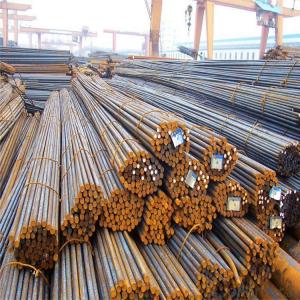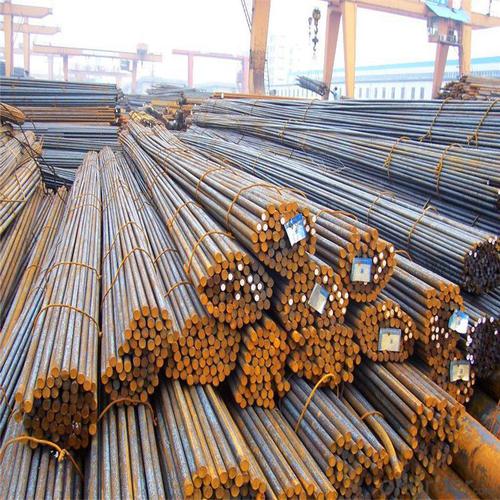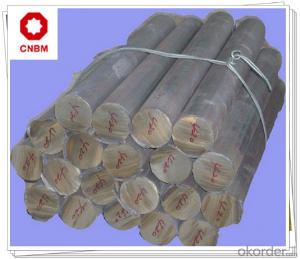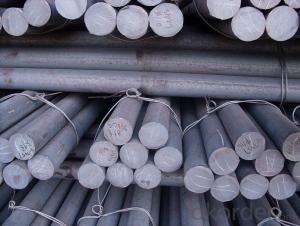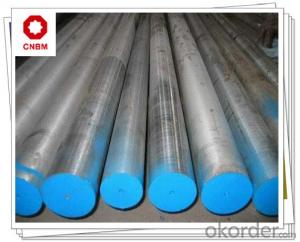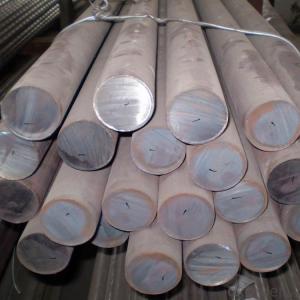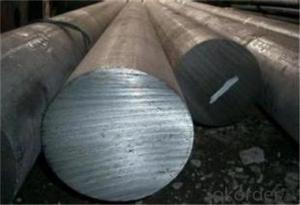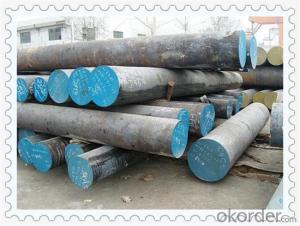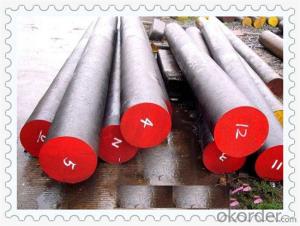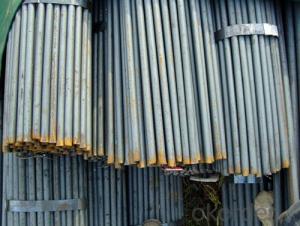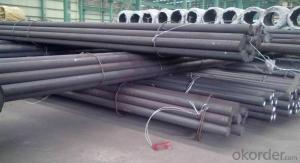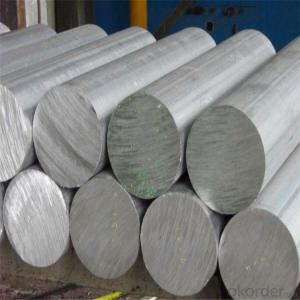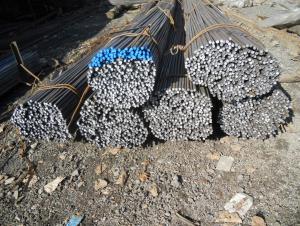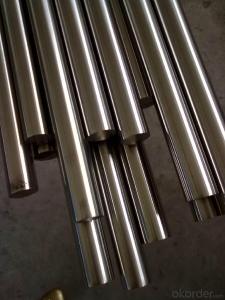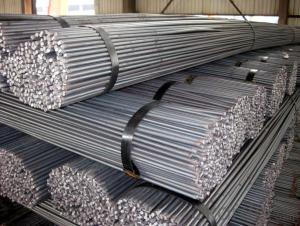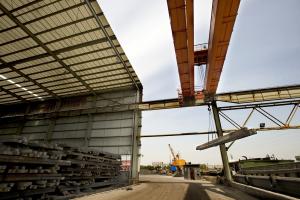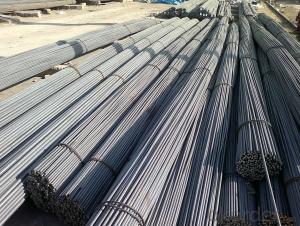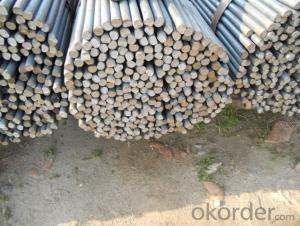DIN EN10083 CK45 Hot-rolled Steel Round Bars
- Loading Port:
- Tianjin
- Payment Terms:
- TT OR LC
- Min Order Qty:
- 100 m.t.
- Supply Capability:
- 500000 m.t./month
OKorder Service Pledge
OKorder Financial Service
You Might Also Like
Specification
DIN EN10083 CK45 Hot-rolled Steel Round Bars
Product Description of DIN EN10083 CK45 Hot-rolled Steel Round Bars
1. Steel grade: ASTM4140, SCM440, 42CrMo, DIN1.7225
2. Length: 6M-12M
3. Diameter: 16mm-300mm
4. Product range: round bar, flat bar, square bar
5. Technique: Hot rolled, forged, cold drawn
Specification of DIN EN10083 CK45 Hot-rolled Steel Round Bars
Material | SCM4140 | Round bar | Dia(mm) | 16-300mm |
Process | EAF + LF + VD + Forged + Heat Treatment (optional) | Length (mm) | Max 12m | |
Heat treatment | Normalized / Annealed / Quenched / tempered | Flat bar | Thickness(mm) | 8-500mm |
Delivery condition | Hot forged +Rough machined (black surface after Q/T)+ Turned (optional) | Width(mm) | 70-200mm | |
Test | Ultrasonic test according to SEP 1921-84 D/d | Length (mm) | Max 12m |
Chemical Composition of DIN EN10083 CK45 Hot-rolled Steel Round Bars
C | Si | Mn | Cr | Mo | P | S |
0.38~0.43 | 0.15~0.35 | 0.75~1.00 | 0.8~1.1 | 0.15~0.25 | ≤0.035 | <0.04< td=""> |
Photo Show of DIN EN10083 CK45 Hot-rolled Steel Round Bars
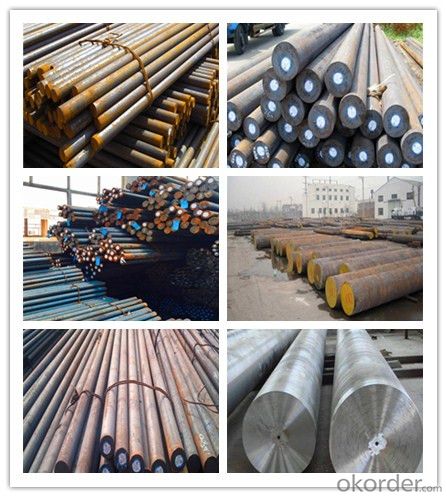
Packing and Delivery:
Packing in bundle package, or as customer's requirements.
Delivery Detail: 45 days after receiving the deposit.
Usage and Applications of DIN EN10083 CK45 Hot-rolled Steel Round Bars
1. Steel round bar is used in a large number of architectural and engineering structures. Or it can be used in construction of plants for the production of steel house frames, high-voltage transmission towers, bridges, vehicles, boilers, containers, ships, etc.
2. And we can use this kind of product on the performance of the mechanical parts if the demand is not very high.
3. Some special material steel round bar can be used for main shaft of steamer, hummer shank, with big section and supper force.
Company Information
CNBM International Corporation is the most important trading platform of CNBM group.
Whith its advantages, CNBM International are mainly concentrate on Cement, Glass, Iron and Steel, Ceramics industries and devotes herself for supplying high qulity series of refractories as well as technical consultancies and logistics solutions.

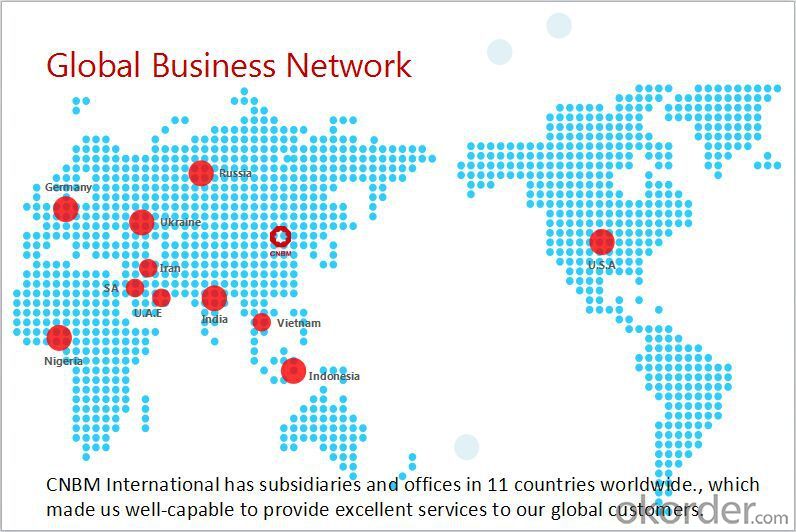
F A Q
1, Your advantages?
professional products inquiry, products knowledge train (for agents), smooth goods delivery, excellent customer solution proposale
2, Test & Certificate?
SGS test is available, customer inspection before shipping is welcome, third party inspection is no problem
3, Factory or Trading Company?
CNBM is a trading company but we have so many protocol factories and CNBM works as a trading department of these factories. Also CNBM is the holding company of many factories.
4, Payment Terms?
30% TT as deposit and 70% before delivery.
Irrevocable L/C at sight.
5, Trading Terms?
EXW, FOB, CIF, FFR, CNF
6, After-sale Service?
CNBM provides the services and support you need for every step of our cooperation. We're the business partner you can trust.
For any problem, please kindly contact us at any your convenient time.
We'll reply you in our first priority within 24 hours.
- Q: Are steel round bars suitable for high-pressure applications?
- Yes, steel round bars are suitable for high-pressure applications. Steel is known for its strength and durability, making it a suitable material for withstanding high pressures. Additionally, steel round bars can be heat treated to further enhance their strength and resistance to pressure.
- Q: Can steel round bars be coated with protective finishes?
- Yes, steel round bars can be coated with protective finishes. These finishes help to prevent corrosion, enhance durability, and provide additional resistance to wear and tear. Common protective finishes for steel round bars include coatings such as galvanization, powder coating, and epoxy coatings.
- Q: How to make the round welds on flat steel flat and qualified?
- It is required that the current is suitable and the bar is stable. If required, the groove can be turned on the round steel to ensure that the welding is beautiful and qualified
- Q: Can steel round bars be heat treated?
- Yes, steel round bars can be heat treated. Heat treatment involves subjecting the steel to a specific heating and cooling process to alter its physical and mechanical properties, such as hardness, strength, and ductility. This process can be applied to steel round bars to enhance their performance for various applications.
- Q: What are the different surface conditions for steel round bars?
- Steel round bars can have a variety of surface conditions depending on how they will be used and how they are made. Some commonly used surface conditions for steel round bars are: 1. Hot Rolled: This is the most common surface condition for steel round bars. It involves heating the steel above its recrystallization temperature and then rolling it through hot rolling mills. This process gives the steel a rough surface with a layer of scale that needs to be removed. 2. Cold Drawn: In this surface condition, the steel round bars are pulled through a die at room temperature. This creates a smoother and more precise surface finish. Cold drawn bars have better dimensional accuracy and surface quality compared to hot rolled bars. 3. Peeled: Steel round bars can also be peeled to remove the scale layer and achieve a smooth surface finish. This process involves rotating the bar against a cutting tool, resulting in a clean and shiny surface. 4. Ground: Grinding is another method used to achieve a smooth surface finish on steel round bars. It involves removing material from the surface using abrasive belts or wheels, resulting in a precise and consistent surface. 5. Polished: Polishing is a surface treatment that enhances the appearance and smoothness of steel round bars. It involves using abrasive compounds and buffing wheels to create a reflective and mirror-like finish. 6. Coated: Steel round bars can be coated with different materials to improve their resistance to corrosion or enhance their appearance. Common coatings include zinc, chrome, nickel, and various types of paint. The choice of surface condition for steel round bars depends on the specific application and desired properties. Each surface condition offers different advantages in terms of appearance, corrosion resistance, and mechanical properties.
- Q: Can steel round bars be used for hydraulic applications?
- Indeed, hydraulic applications do permit the use of steel round bars. Renowned for its robustness and endurance, steel proves a fitting substance for hydraulic systems demanding intense pressure and substantial burdens. Steel round bars facilitate the production of diverse hydraulic constituents, including cylinders, pistons, shafts, and valves. Moreover, steel's sturdiness and resistance to corrosion render it an unwavering option for hydraulic applications wherein the fluid may harbor impurities or undergo elevated temperatures. Nonetheless, it remains crucial to ponder over the specific prerequisites of the hydraulic application and meticulously choose the grade and type of steel round bars to ensure supreme performance and longevity.
- Q: What is the difference between 40Cr round steel and 40Cr forging parts?
- But 40Cr forgings are objects that are subjected to pressure by plastic deformation to shape a desired shape or suitable compressive force. (usually done by using hammers or pressure). The casting process constructed a fine grain structure and improved the physical properties of the metal.
- Q: What are the different types of steel round bars available in the market?
- There are several different types of steel round bars available in the market, each with its own unique characteristics and applications. Some of the most common types include: 1. Mild Steel Round Bars: These are the most commonly used type of steel round bars due to their versatility and affordability. They have a low carbon content and are easy to weld and machine, making them suitable for a wide range of applications. 2. Carbon Steel Round Bars: Carbon steel round bars have a higher carbon content than mild steel, which gives them increased strength and hardness. They are commonly used in applications that require high strength, such as construction and machinery manufacturing. 3. Alloy Steel Round Bars: Alloy steel round bars are made by adding various alloying elements, such as chromium, nickel, or molybdenum, to improve their mechanical properties. These bars offer enhanced strength, toughness, and resistance to wear and corrosion, making them ideal for applications in the aerospace, automotive, and oil and gas industries. 4. Stainless Steel Round Bars: Stainless steel round bars are highly corrosion-resistant due to the presence of chromium, which forms a protective oxide layer on the surface. They are widely used in industries such as food processing, pharmaceuticals, and chemical processing, where resistance to corrosion and hygiene are crucial. 5. Tool Steel Round Bars: Tool steel round bars are specifically designed for tooling applications, such as cutting, drilling, and shaping materials. They have high hardness, wear resistance, and heat resistance, making them suitable for manufacturing tools and dies. 6. Duplex Steel Round Bars: Duplex steel round bars are a type of stainless steel that contains both austenitic and ferritic microstructures. They offer a combination of high strength, excellent corrosion resistance, and good weldability, making them ideal for applications in the chemical and petrochemical industries. These are just a few examples of the different types of steel round bars available in the market. The choice of the right type depends on the specific requirements of the application, including strength, corrosion resistance, machinability, and cost.
- Q: Can steel round bars be hardened?
- Yes, steel round bars can be hardened through various heat treatment processes such as quenching and tempering. This can significantly increase their strength and durability.
- Q: Can steel round bars be used for making marine equipment?
- Yes, steel round bars can be used for making marine equipment. Steel is a versatile and durable material that is commonly used in the marine industry due to its strength, corrosion resistance, and ability to withstand harsh environmental conditions. Steel round bars can be machined, welded, and formed into various shapes and sizes to meet the specific requirements of marine equipment. They are commonly used for manufacturing marine components such as propeller shafts, rudders, anchor chains, and structural supports. Additionally, steel can be coated or treated to enhance its corrosion resistance, making it suitable for prolonged exposure to saltwater and other corrosive elements found in marine environments.
Send your message to us
DIN EN10083 CK45 Hot-rolled Steel Round Bars
- Loading Port:
- Tianjin
- Payment Terms:
- TT OR LC
- Min Order Qty:
- 100 m.t.
- Supply Capability:
- 500000 m.t./month
OKorder Service Pledge
OKorder Financial Service
Similar products
Hot products
Hot Searches
Related keywords
